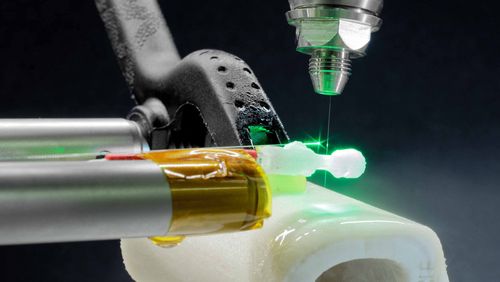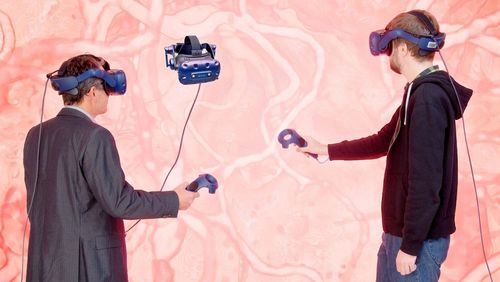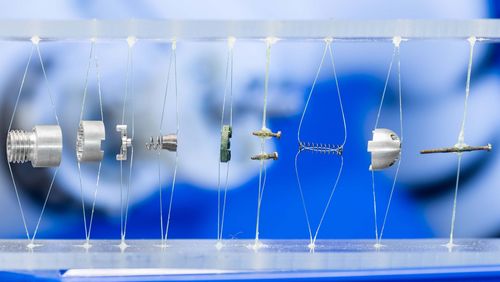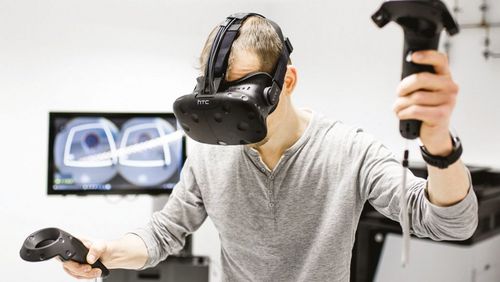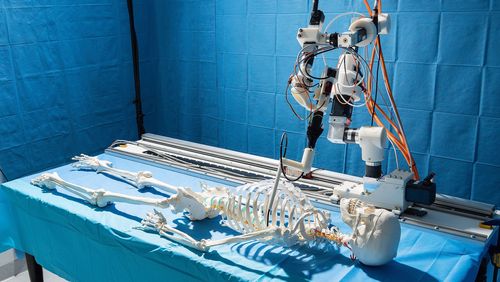
Virtual reality in hospitals
The MIRACLE team achieved a major breakthrough in 2018: it launched SpectoVR, the team’s specially designed 3D software. Since January 2018, doctors at University Hospital Basel have been using the technology to plan complex surgical interventions. SpectoVR enables patients to see why an operation is necessary, and it allows surgeons to prepare the best-possible surgical procedure – in collaboration with colleagues from all over the world.
Step by step, researchers at the University of Basel’s Department of Biomedical Engineering are nearing their goal of providing minimally invasive bone surgery using robot-guided lasers. In 2017, the team led by professors Philippe Cattin and Hans-Florian Zeilhofer developed the arm of the robot used to steer the high-precision laser “scalpel”. Then, in 2018, they optimised the components of the robot arm and developed, among other things, a six-millimetre force sensor that reacts to compression and tension. And researchers in the MIRACLE project achieved another breakthrough with the SpectoVR navigation software.
Breakthrough in 3D imaging
SpectoVR is a software program that converts medical data collected from, for instance, a CT scan into a threedimensional image. So far, the program enables tissues, bones and blood vessels to be viewed in 3D. Special glasses allow surgeons and patients alike to navigate through a virtual body and see the areas that will be operated on: arteries can be traced, the spine can be rotated around its own axis and tissue can be viewed from every possible angle. SpectoVR has been in use at University Hospital Basel since January 2018. The three-dimensional images of a surgical site allow doctors to virtually plan complex interventions. What is more, patients also benefit from the technology because it helps them to better understand why an operation is necessary and what exactly a procedure entails.
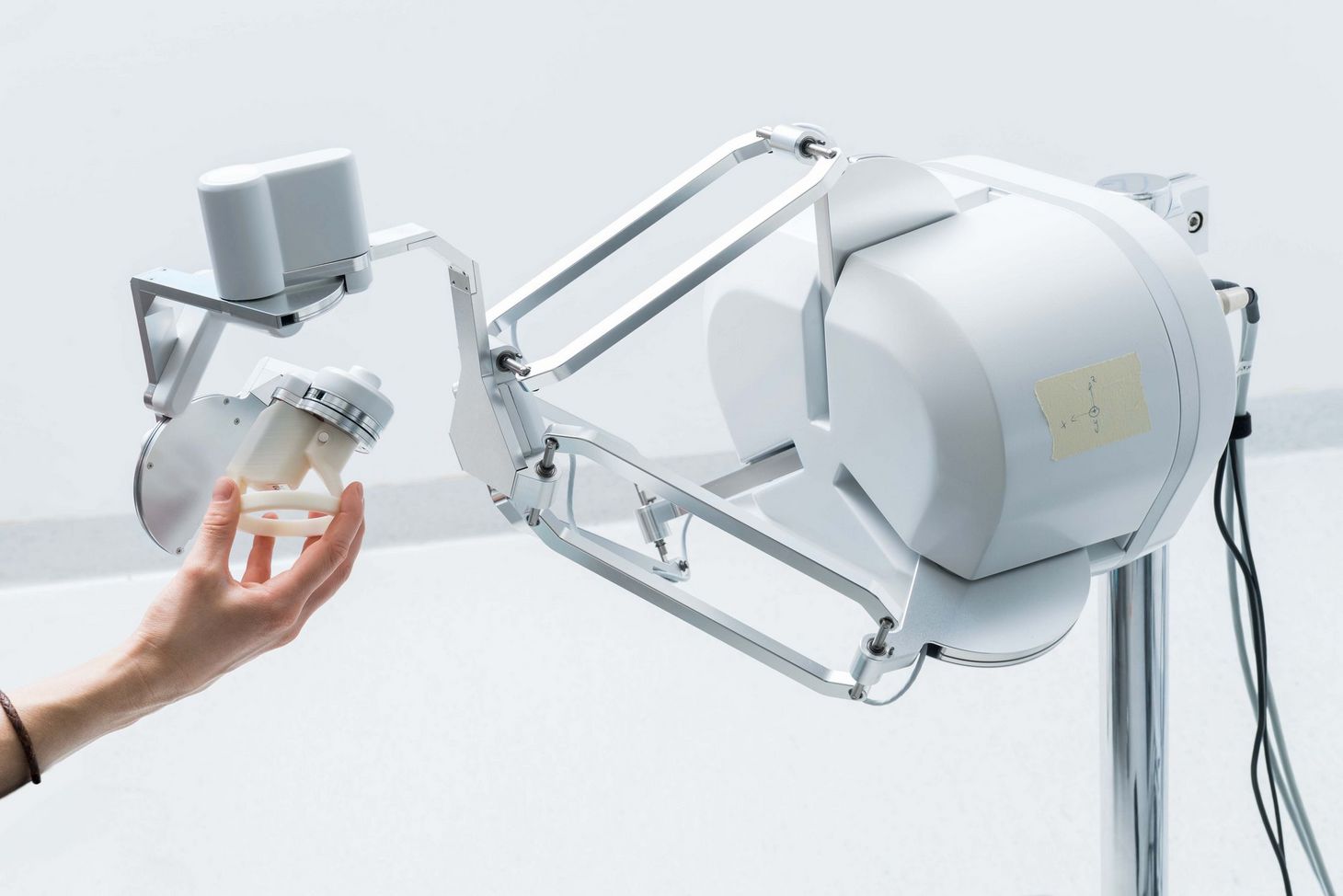
Planning complex interventions
Surgeons at University Hospital Basel can now use SpectoVR to prepare complex procedures such as surgery on enlarged cerebral vessels (aneurysms) or on the spine. Neurosurgeon Raphael Guzman is full of praise for the technology: “By virtually entering the human brain, we can view the details in the diseased vessels—for instance in the case of an aneurysm—from all angles and better understand the overall situation. This makes a procedure safer, and probably shorter as well.” Surgeons are also increasingly using SpectoVR to perform operations on the spinal column. The first intervention planned using SpectoVR software was for a case of Bechterev’s disease, a rheumatic ailment that causes a complex malalignment of the spine.
Improving doctor-patient communication
University Hospital Basel has equipped several rooms with SpectoVR 3D software, enabling doctors to show their patients exactly where the problems are and what parts of the body are affected. Patients greatly appreciate the new technology. “After my first shoulder operation, I still had pain,” one patient says. “But with the 3D image, the doctors could see that the pain was caused by a pinched nerve near my spine and that another surgery was necessary. The 3D pictures helped me to accept the fact that the second operation couldn’t be avoided.”
Highly sought world’s first
The software also allows surgeons to discuss complex surgical interventions in real time with specialists from all corners of the globe: they can meet in a virtual room created by SpectoVR to consult with one another and plan the best-possible surgical procedure. That SpectoVR enables discussions on actual cases is a world’s first—and a feature that has generated international demand.
Uses in medical training
SpectoVR is also proving to be a valuable tool in medical training: much like a flight simulator enables future pilots to practise in a virtual environment, the software projects a realistic image of the interior of the human body for medical students. A summer school on the technology has already been held. And last but not least, the researchers are developing SpectoVR for use as a steering mechanism in minimally invasive bone surgery using laser technology—the centrepiece of the MIRACLE project. In 2025, surgeons should be able to conduct highprecision interventions using a laser-guided robot arm and SpectoVR software.
Text: Brigitt Blöchlinger
Photos: Frank Brüderli
